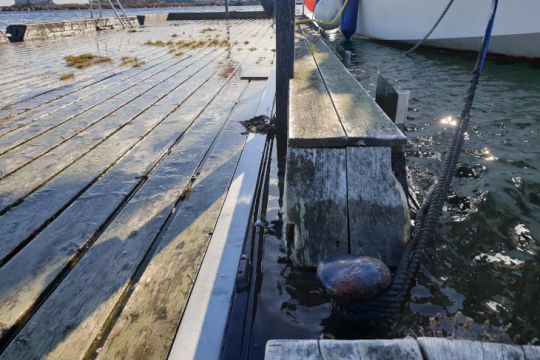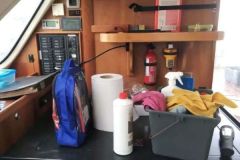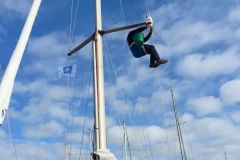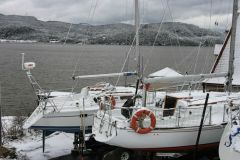A cold but not excessive climate
The St Pierre et Miquelon archipelago is located in the North Atlantic, south of Newfoundland. It enjoys a cold oceanic climate resulting from a combination of continental influences and Arctic air currents, combined with the oceanic influences of the warm Gulf Stream and the cold Labrador Current.
All these factors mean that the archipelago is neither very hot nor very cold. Annual averages are around 5°, with temperatures rarely dipping below minus ten degrees and rarely exceeding twenty.
Thanks to its non-extreme temperatures, seawater rarely freezes in St Pierre. A layer of ice may nevertheless form in some places for a few days in the depths of winter.
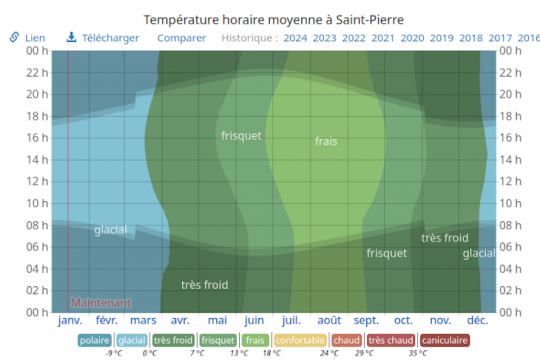
A strong wind
However, the islands are very windy, with an average of 156 days of strong wind per year, or more than one day in three. Fog is also a feature of St. Pierra weather, particularly in early summer.
To winter on a sailboat in St Pierre, you need to take steps to protect yourself from the sub-zero temperatures between December and April, as well as the sometimes violent winds.
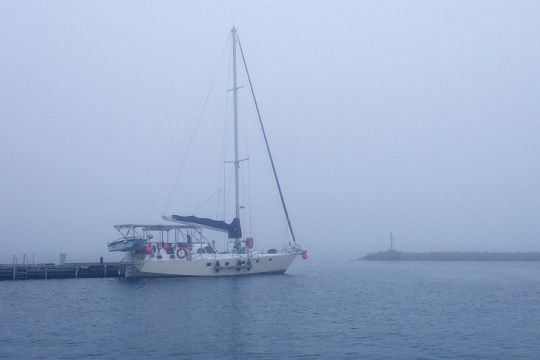
Protecting your sailboat from the cold
Right from the outset, Arthur features solid insulation. However, with the continuous presence of wind, the cooling factor of its aluminum shell is significant. The first preparations for winter therefore consisted in eliminating all the thermal bridges identified on the inside by adding insulation.
Next, we built an airlock in the cockpit, in wood lined with insulation, to insulate the descent from wind and weather. It also creates an entrance for storing snow-covered coats and boots. A naturally refrigerated compartment has also been built to take advantage of the climate.
Insulating foam covers the windows at night to prevent condensation and conserve heat.
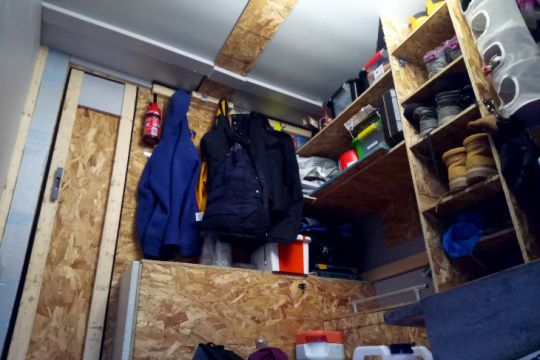
Heating the boat
Once the boat is well insulated, it needs to be heated. Arthur has an electrical terminal with an EDF subscription that allows him to connect one or more radiators. An oil-bath heater operates permanently in the saloon. It is supplemented, depending on the temperature, by a fan heater or the boat's diesel stove, if necessary.
These devices help maintain a pleasant temperature inside. At night, however, the boat cools down as outside temperatures drop, and it's not uncommon to wake up feeling a little chilly.
To improve the yacht's heating, the forward cabin is closed for the winter to prevent heat loss through the uninsulated forepeak. An electric dehumidifier is also in constant operation to counter the high level of humidity.
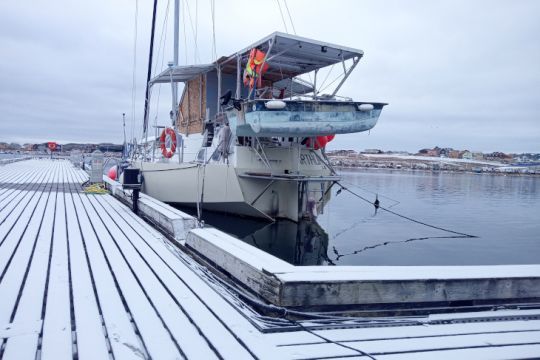
Protecting your sailboat from gales
Strong winds are common in St Pierre. Hardly a week goes by without gusts of 40 to 50 knots. This is one of the reasons why almost all boats are taken out of the water during the winter months.
To prevent Arthur from crashing into the quay during gales, mooring lines are stretched between the boat and a mooring block in the bay, pulling Arthur away from the walls. This mooring block is usually used to secure the pontoons, which are also dried out from the end of November.
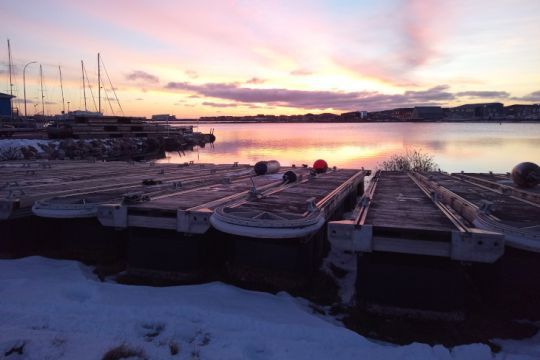
A number of sturdy mooring lines, protected by anti-drag sheaths, are also necessary for trouble-free wintering.
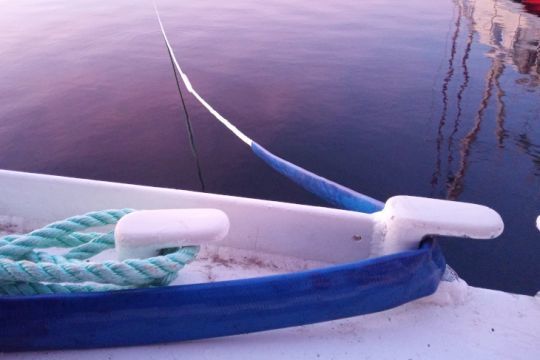
Overwintering possible with a few special features
Wintering on a sailboat in St Pierre is possible when the boat and crew are well prepared. However, some inconveniences are to be expected.
Depending on wind direction and strength, passage from the bridge to the quay can sometimes prove complicated, especially when ice and snow make the surfaces very slippery. What's more, when there's a combination of high tide and strong winds, waves can overwhelm the quay, making access to the boat complicated.
What's more, the water supply to the bollards is cut off as soon as the frost sets in. So we regularly have to run a hose between the sailing school and the boat to fill the tanks.
When the wind blows hard, sailboats can be battered against the quay. Arthur, which is heavy, stable and sturdy, copes well. However, a light sailboat could be more exposed to the elements.
